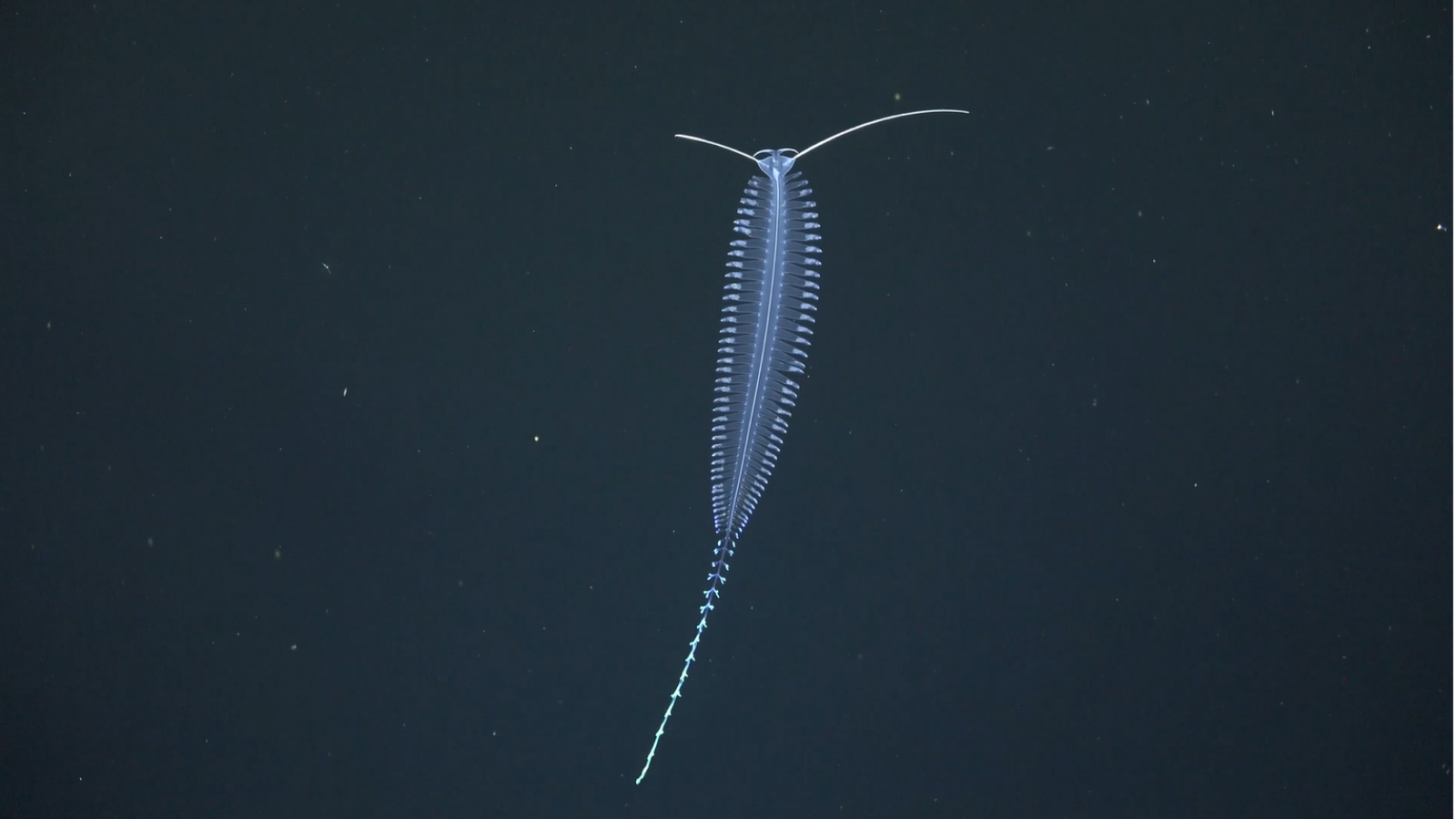Watch hypnotizing footage of mysterious deep-sea worm dancing in the twilight zone
Schmidt Ocean Institute spots a bioluminescent deep-sea worm that creates a hypnotizing display as it swims in circles.
Mesmerizing footage has captured a weird bioluminescent worm undulating through the twilight zone.
Researchers from the Schmidt Ocean Institute spotted the deep-sea worm off the coast of Chile during a research cruise exploring seamounts in the area and posted the video to Facebook. They identified the creature as a segmented gossamer worm (Tomopteris) — a marine worm that spends its entire life in constant motion, never touching the seafloor or seeing sunlight.
"They spend their whole life swimming through the water with rows of paddles, similar to how an earthworm uses its segments to 'swim' through the soil," Steve Haddock, senior scientist and marine biologist at the Monterey Bay Aquarium Research Institute (MBARI), who researchers the genus but was not involved in the expedition, told Live Science in an email.
Related: Black-eyed squid dragging thousands of eggs like a cape captured in video off Costa Rica
The researchers spotted the glowing worm using a remotely operated vehicle (ROV) at a depth of about 1,818 feet (554 meters), and then a second time around 2,225 feet (678 m) below the surface, representatives from the Schmidt Ocean Institute told Live Science.

Tomopteris species are typically found in the twilight zone, or mesopelagic zone, at depths between 660 feet and 3,300 feet (200 m to 1,000 m). The bristly paddles that segmented gossamer worms use to swim around are called parapodia. The worms can release a fog of golden-yellow bioluminescent mucus from these paddles. Researchers think this fog acts as a smokescreen to help the creatures evade predators.
The gold hue of the mucus has puzzled scientists, as most marine bioluminescent organisms emit a blue-green light.
Sign up for the Live Science daily newsletter now
Get the world’s most fascinating discoveries delivered straight to your inbox.
Previously, Haddock and a team of MBARI researchers discovered that aloe-modin — a chemical typically found in the gel, sap and leaves of plants — is responsible for creating this light. However, researchers still don't know exactly why or how this happens. It was not clear if the worm was responsible for creating the chemical and so one theory suggests that they may acquire the chemical through their diet — which includes tunicates, fish larvae and planktonic marine worms called chaetognaths.
"The reason for the yellow color remains one of the mysteries of life in the ocean," Haddock said.

Elise studied marine biology at the University of Portsmouth in the U.K. She has worked as a freelance journalist focusing on the aquatic realm. Elise is working with Live Science through Future Academy, a program to train future journalists on best practices in the field.










